Apple Orchard
1838
The orchard was originally planted and tended by some of the Shakers who now rest in the nearby Shaker Cemetery.
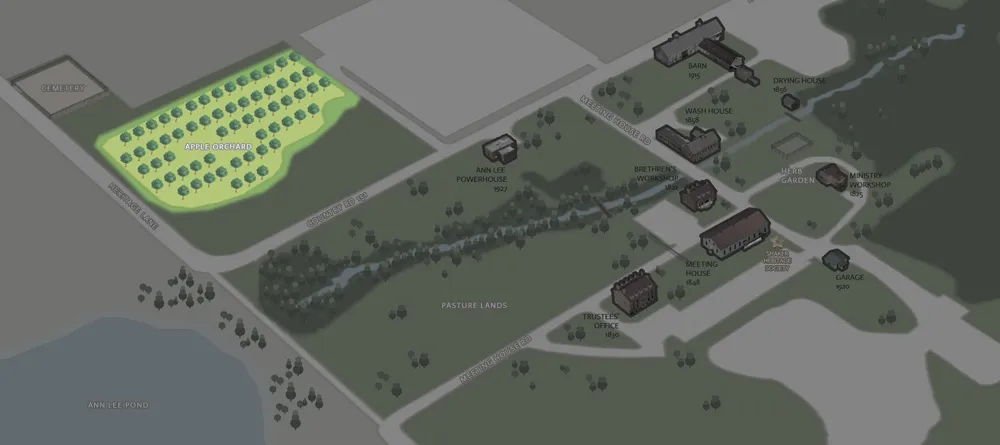
The Church Family orchard appears on David Austin Buckingham’s 1838 map of the Church Family site. Each of the Watervliet Shaker Families had an orchard.
Apples were an important ingredient in the Shaker diet. Each year’s harvest was dried or stored in barrels and used to make pies, applesauce, and apple butter. The Shakers also brewed cider for drinking, cooking, and baking. Cider was used to season vegetable dishes and sauces for meat and poultry and to add flavor to cakes, pies and puddings. Cider vinegar and apple brandy were used for pickling and preserving fruits and vegetables. Apple pie was served at many Shaker meals.
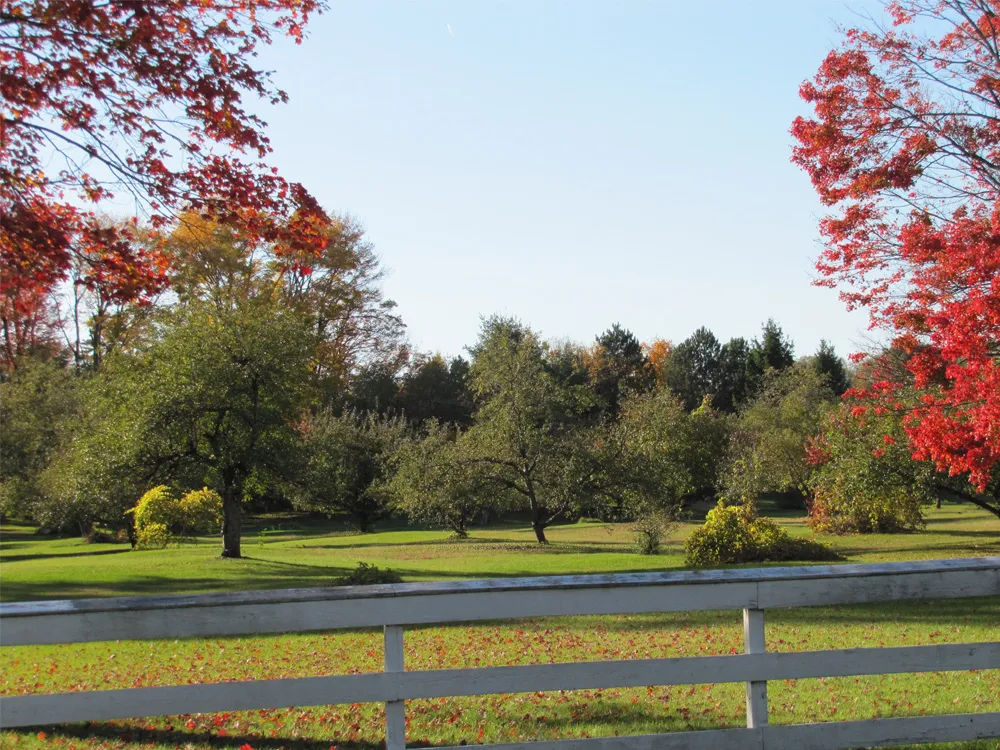
Apples were also part of the Shaker economy. Applesauce was one of the canned foods Shakers made to sell to the “World's People" (non-Shakers). The Shakers grew other fruits like peaches and plums, but apples were the most important fruit crop. Shaker farms in Watervliet once covered over 4,000 acres of land.
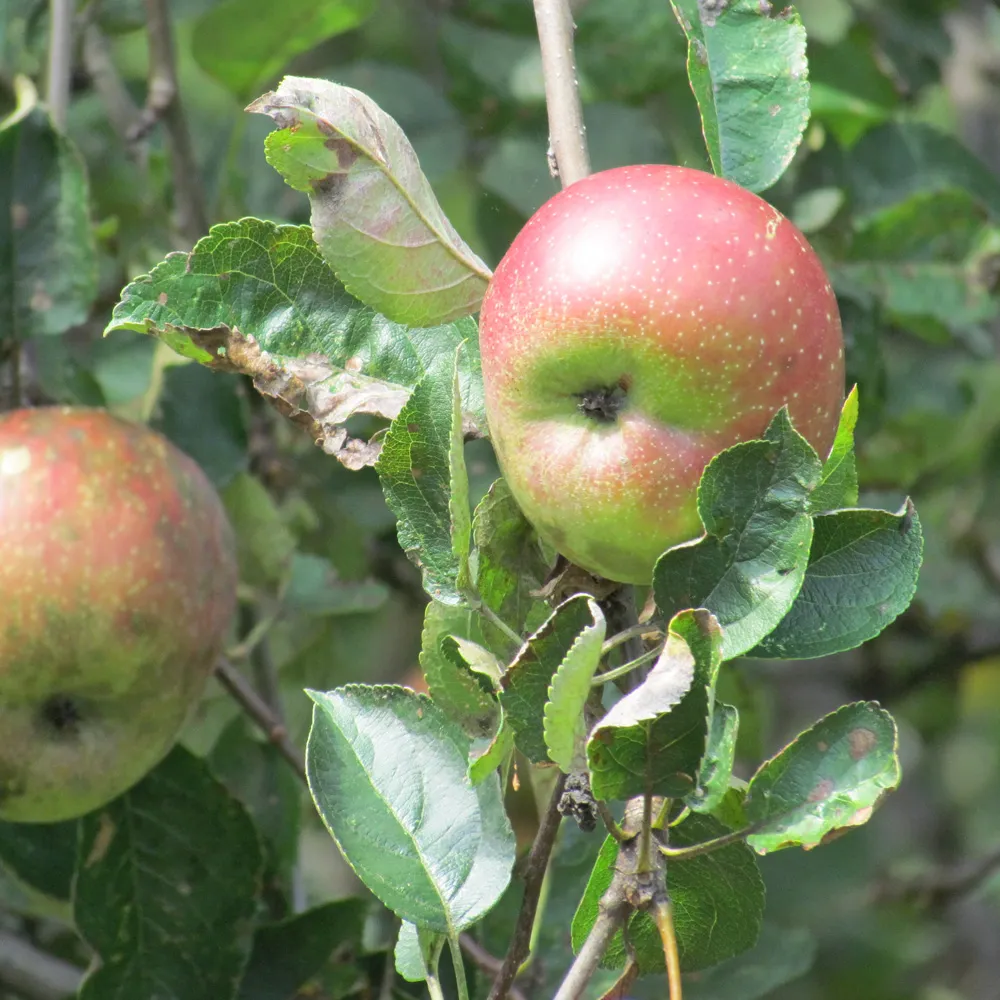
In addition to raising food for themselves and their livestock, Shakers also grew crops to supply materials for industries: “broom corn” (a type of sorghum) for making brooms; a wide variety of vegetables that were processed for the seed packing business; and hundreds of herbs used to for the medicinal and culinary herb industry.
Today, the orchard is the only remaining site that represents the significant agricultural history of the Watervliet Shakers.
Shaker Cemetery
1785
The orderly arrangement and simple design of the stones in this cemetery reflect the communal lifestyle and egalitarian ideals of the Shakers buried here.
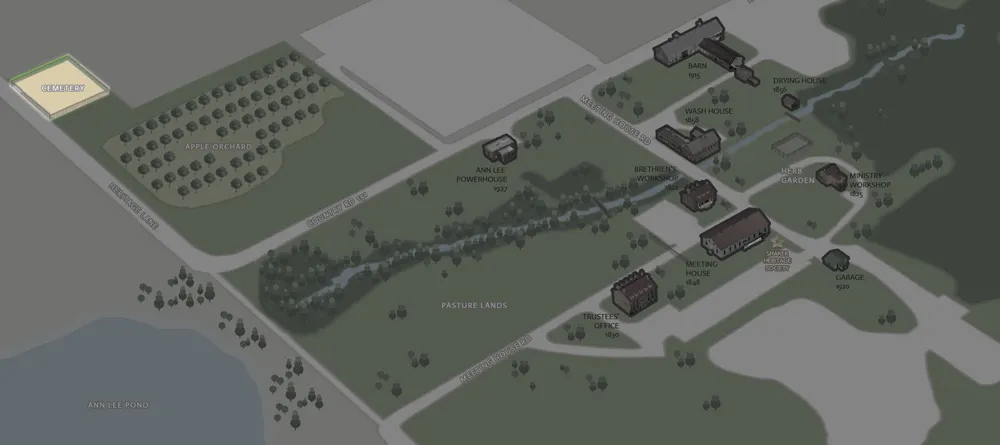
What the stones do not reveal is the innovation, craftsmanship, and industriousness of the individuals who lived, worked, and worshiped together to build a “heaven on earth.”
There are a number of African-Americans, including Violet Bennett (B-23), who was the first burial in 1785.
The 445 burials reflect the Shakers’ belief in the equality of men and women and of all races. Only Mother Ann Lee’s stone is more prominent.
The Shaker community was compassionate. Graves in the first row are individuals of the “World” (as non-Shakers were known) who had lived with the Shakers or wished to be buried near their Shaker relatives. A few Shakers who committed suicide are included among the burials. The Shakers did not shun those who took their own lives.
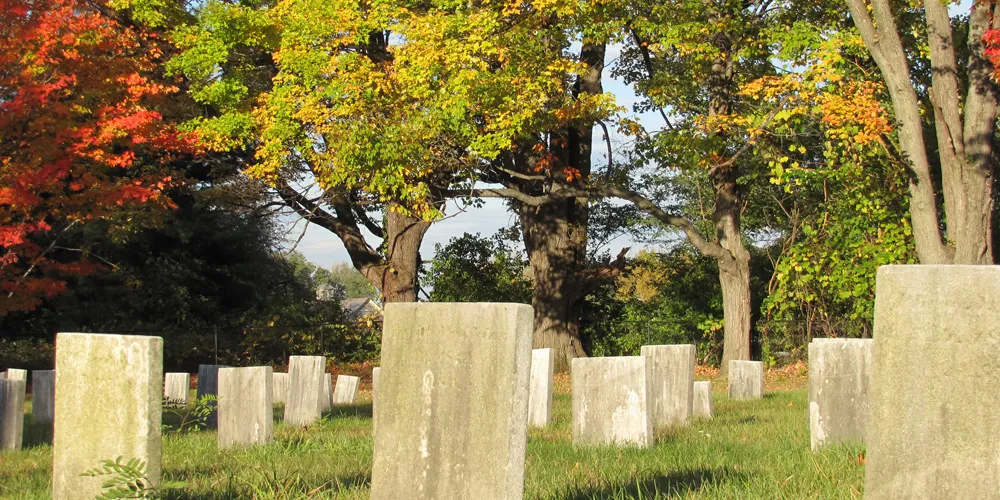
Among those buried in the same row (F) as Mother Ann are Richard Hocknell, who not only provided funding for the Shakers’ ship voyage to America, but who also leased the land at Watervliet for the new settlement in 1775; Father William Lee, Mother Ann’s biological brother; Mother Lucy Wright, who was based at Mt. Lebanon and was the national head of all Shaker communities from 1796 to 1821; and Eldress Anna Case of the South Family, who was the last Shaker Eldress of the Watervliet community.
Given that the Shakers were pacifists, visitors to the cemetery may be surprised to see American flags placed at some of the graves. Six of the Shakers buried here joined the community after their service in the American Revolutionary War of the War of 1812.
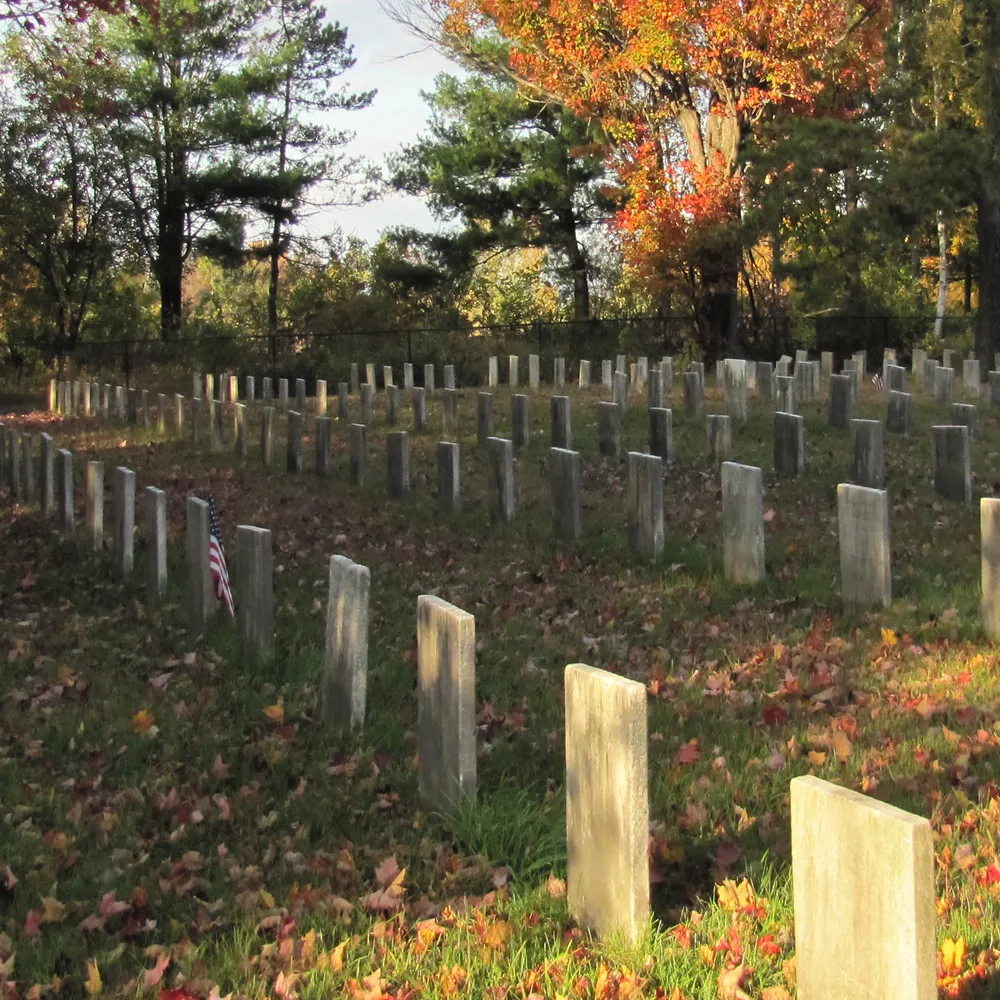
The original stones were replaced by the Shakers in 1880. We are fortunate to have each of the graves marked. In a number of other Shaker cemeteries, individual stones were replaced with one memorial marker for the entire community.
While the Shaker Cemetery remains in the ownership of the Shaker Trust, Albany County provides maintenance.
Herb Garden
1827
Knowledge of herbal remedies was essential for maintaining the health of a large, communal settlement.
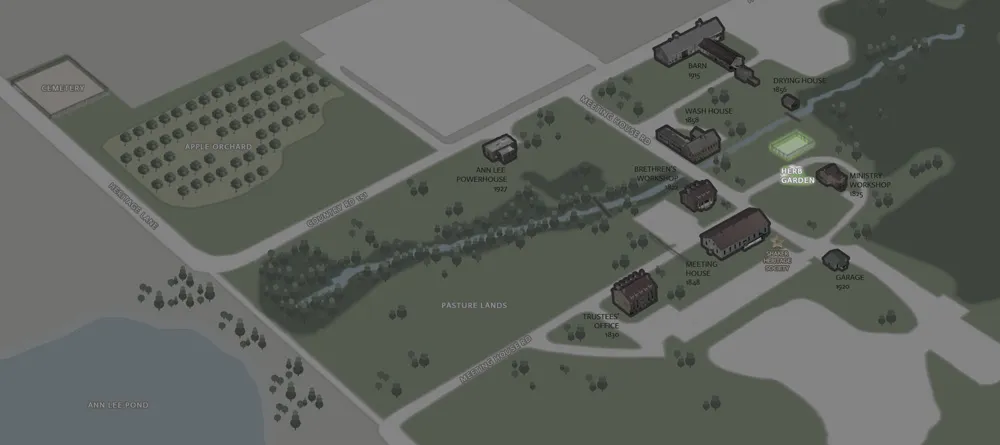
Shakers gathered local wild herbs at first, later bought some from outside sources, and then began to grow herbs to use for both medicines and cooking. By 1800, the Harvard and Mount Lebanon communities began to produce herbal medicines for their own use and in the 1820s started selling surplus product to the World.
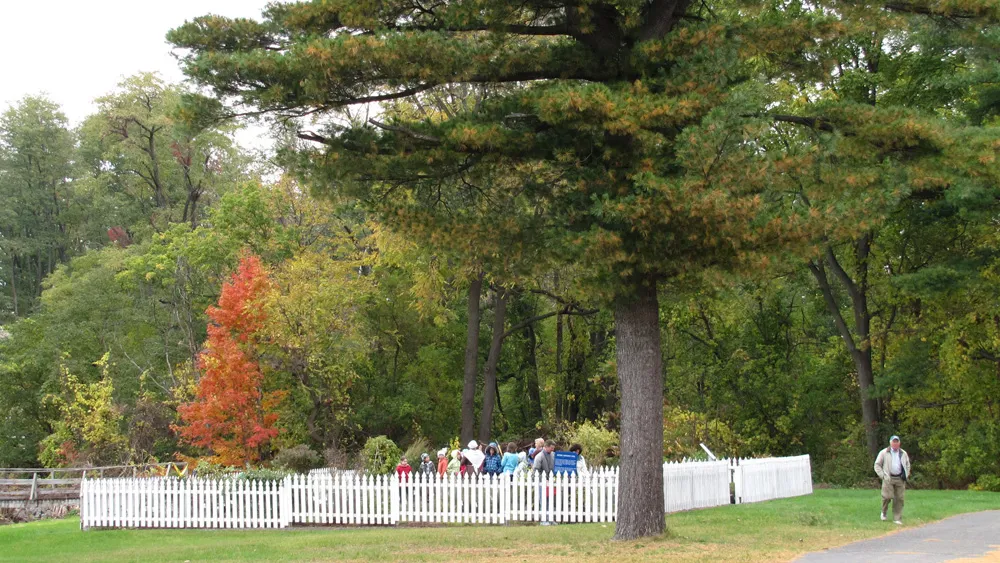
In 1827, the Watervliet Shakers began to produce medicinal and culinary herbs. The Watervliet Church Family published their first catalogue in 1830 with 142 herbs for sale. In 1850 there were 186 herbs, 27 extracts, and 4 ointments offered along with powders and cooking herbs. The last catalogue, published in 1860, listed 292 herbs and 25 extracts. In short, this was big business for Watervliet for much of the 19th century.
The American Pharmaceutical Association credits the Shakers with initiating the first herbal medicine industry in the US.
Herbs were processed into one-ounce cakes, pills, extracts, and powders. As with their many other industries, the Shakers were known for high-quality herbal products, especially important at a time of unlimited “quack” remedies that were on the market. Shaker herb gardens were extensive, often with one species of herb planted on many acres of land. At one time the Watervliet Shakers grew 30 acres of roses to produce rosewater.
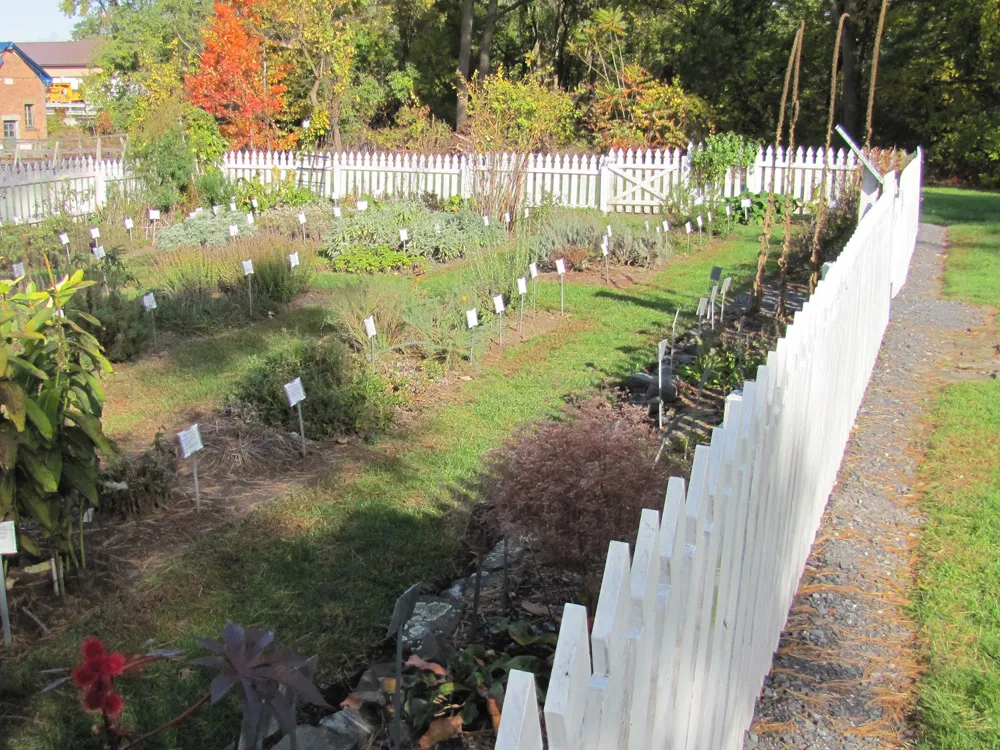
Created in 1990 as an educational resource, the garden is located within the perimeter of the 1838 Sisters’ Workshop. Portions of the stone foundation are visible at the entrance. The Shaker Heritage herb garden contains over 150 plants that are each labeled according to their historic use. Many herbs were both medicinal and culinary, and a number of the plants were also used to dye cloth and yarn.
Pasture Lands
1800
Research indicates that much of this particular pasture area has been used for farm animals since the 18th century.
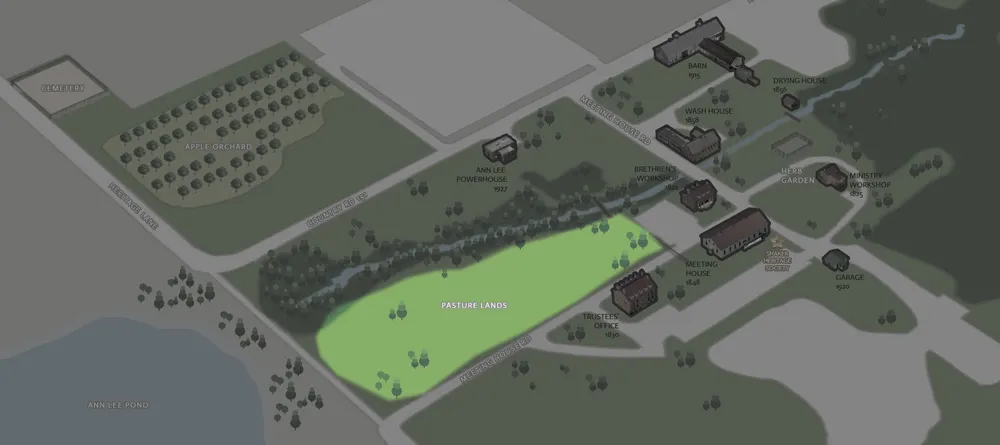
All animals in the Shaker community served a specific purpose: cows for dairy and meat, oxen for farm work, horses for travel, chickens for eggs and food, and cats for pest control.
The Shakers also had very strict rules for humane treatment of all creatures: “No beasts belonging to the people of God may be left to suffer with hunger, thirst, or cold, in consequence of neglect on the part of those who have care of such beats; but all should be kept in their proper places, and be properly attended to according to their needs".
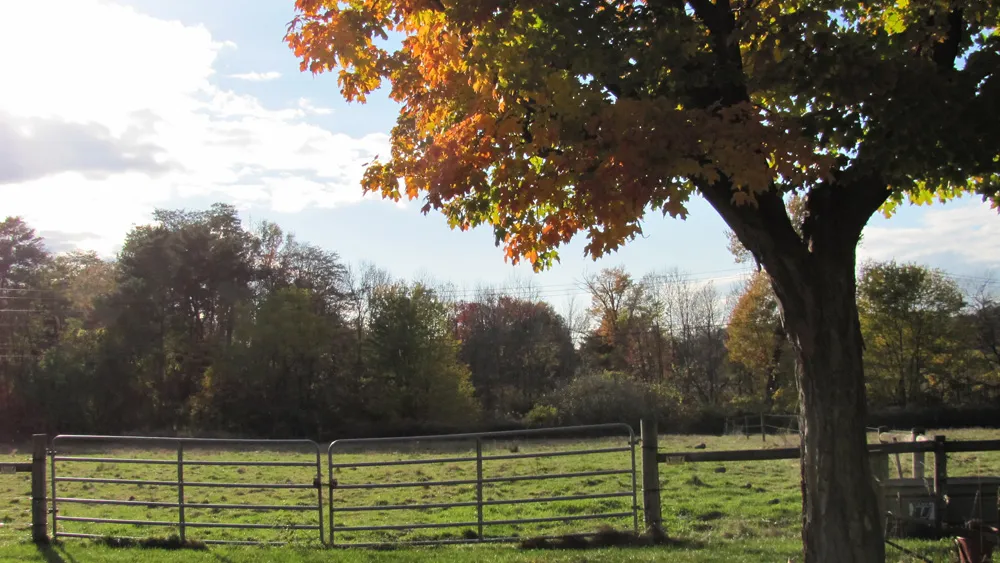
The 1838 map drawn by Brother David Austin Buckingham identifies six grasslands and one hog pasture area surrounding the Church Family site. Several grassland pastures remained through the early 20th century.
In the spring and summer, this particular pasture serves as the home for a small group of Kerry Cows, a heritage Irish dairy breed.
Ann Lee Pond
1811
Beginning around 1811, the Church Family dredged the southern portion of their property to create a deeper pond that would provide waterpower for a new mill.
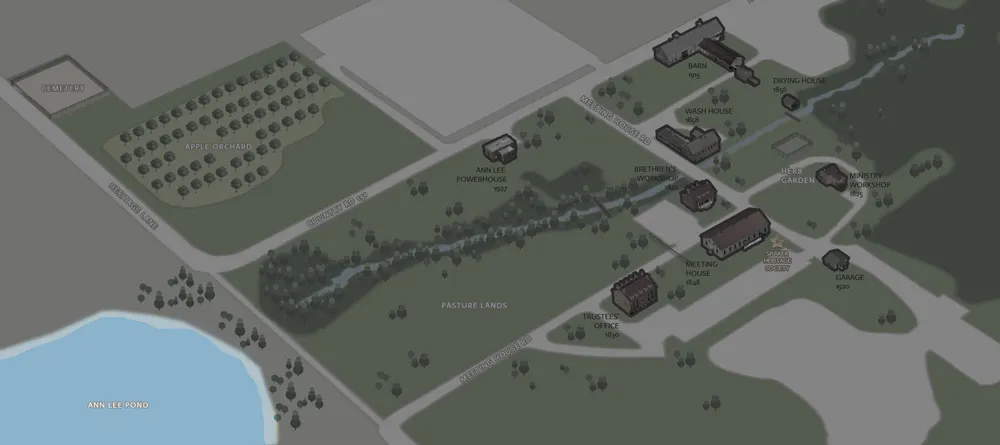
The new mill constructed in 1812 was located on the south side of the road and operated for thirty years before it was replaced with an updated building. The new 1842 mill was built on the north side of the road and had four waterwheels running: one in the saw mill, two in the grist mill, and one for running machinery.
Fire destroyed the second mill in 1886, and the Church Family built a third mill by 1888. The third mill was demolished after the Shaker community closed, but ruins are still visible.
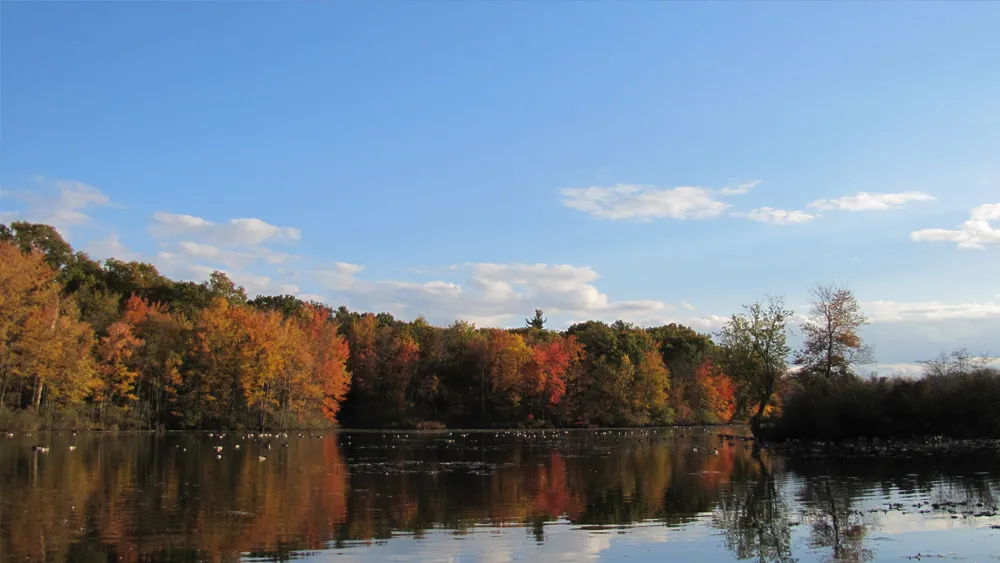
The pond and its environs were always an important resource for the Shakers. From the beginning of the settlement, Shakers fished at the pond and gathered plants and herbs in the surrounding area. In addition to providing waterpower for a number of industries, the mill pond was a source of ice which was harvested each winter. Teams of Brethren and horses cut blocks of ice that were packed in sawdust and straw to last the rest of the year.
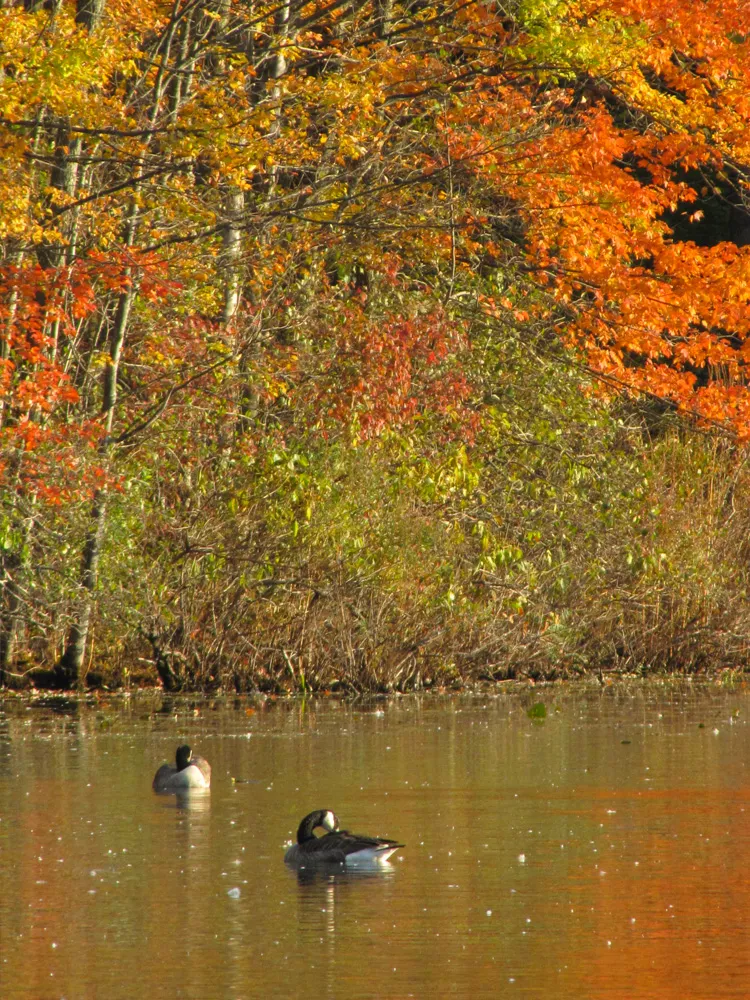
At least four streams feed into the body of water known today as Ann Lee Pond, and the water flow continues through the Church Family site as Shaker Creek.
In 1977, the pond became part of the newly-designated 177-acre Ann Lee Nature Preserve created by Albany County. For several decades, the site was a favorite place for ice skating each winter.
Today the area is being allowed to return to a more natural wetland, and the pond no longer freezes adequately for skating. It remains a very popular site for visitors who enjoy fishing, bird watching, and walking the trails around the pond.